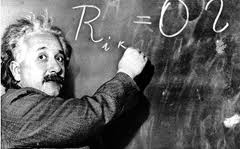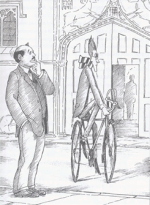Rattling around in the back of my mind, organized into two categories, are lists of things that I just don’t understand. One list consists of diverse items that I have accepted as enduring mysteries beyond my comprehension. Electricity, for example – can’t seem to understand it, but that doesn’t stop me from turning the lights on and off.  Raw carrots are also on this list, specifically why I always get the hiccups when I eat them. Then there is the issue of my chocolate chip cookies and why they come out differently every time. Sometimes they are beautifully fluffy. Other times they are thin wafers, which can have their own crispy charm, unless, like last night, I have to pry them off the cookie sheet like a scab.
Raw carrots are also on this list, specifically why I always get the hiccups when I eat them. Then there is the issue of my chocolate chip cookies and why they come out differently every time. Sometimes they are beautifully fluffy. Other times they are thin wafers, which can have their own crispy charm, unless, like last night, I have to pry them off the cookie sheet like a scab.
I’ve always wondered why “Citizen Kane” is supposed to the best movie of all time. I saw it once in high school and thought it was a dreary bore, but then was unnerved by the thought I was probably just too unsophisticated to appreciate its SYMBOLISM, an intimidating concept in and of itself. What does it really mean when Kane walks through a hall of mirrors – is this supposed to be a comment on perception vs. reality or something more subtle that is really over my head? Last weekend, I rented the movie to give it one last chance, and I even printed off a cheat sheet listing the attributes of this classic. We watched it as a family and while we remained patient during the first hour, we eventually realized that the plot line was never going to take off, and we all started multi-tasking with iPADs. So without any shame or remorse I have now placed Citizen Kane on the list of things that I have given up trying to understand.
My second list includes things that I would like to understand at some point in my life, if I ever get around to it. Last year I successfully pried two topics off that list – understanding why you cannot divide by zero, and why you get a positive number when you multiply two negative numbers together. These two topics were easily accessible; after all they were the basis of elementary school math. Now, I thought I would take a crack at a more formidable topic – the enduring mystery of why you don’t age in space, a.k.a. Einstein’s theory of relativity.
When I heard of this bizarre conundrum in high school, I immediately gave up any hope of understanding it. First of all, this was a physics issue, and even worse it was a rocket science issue, and I knew from an early age that I was never going to be a rocket scientist. I have never been comfortable with abstract topics (see: SYMBOLISM, above) and, aside from using an electrical current to mysteriously magnetize a screw driver, my exposure to physics has primarily consisted of all these bizarre thought exercises that have no real world relevance – I distinctly remember one example from college physics. We were asked how we could cross a lake if were stranded in the middle on a frictionless piece of ice. My short answer was, “I don’t really care, because it will never happen.” I barely survived my one year physics course that I had to take as a prerequisite for medical school.
But now 30 years later I am ready to give it another try. I figure if I am going to understand anything about physics I might as well tackle Einstein’s splashiest theory of  relativity. The classic example describes two identical twins, one of whom is an astronaut and heads off to Mars in a spaceship and is gone for many years. When he at last returns and steps out of the spaceship, he astonished to see his gray-haired twin walking with a cane, while he looks as fresh as a daisy. This story seemed just so bizarre – after all shouldn’t time be the one constant we can rely on? A second should be a second everywhere, and if the two twins synchronized their incredibly accurate watches just as the rocket ship departed, why should they be so predictably off kilter, in fact many years apart, when the rocket returns?
relativity. The classic example describes two identical twins, one of whom is an astronaut and heads off to Mars in a spaceship and is gone for many years. When he at last returns and steps out of the spaceship, he astonished to see his gray-haired twin walking with a cane, while he looks as fresh as a daisy. This story seemed just so bizarre – after all shouldn’t time be the one constant we can rely on? A second should be a second everywhere, and if the two twins synchronized their incredibly accurate watches just as the rocket ship departed, why should they be so predictably off kilter, in fact many years apart, when the rocket returns?
The theory of relativity is considered the hairiest of all physics problems, so I knew that I had to clearly state my objectives to avoid any mission creep. For example, I don’t need to understand relativity so well that I could explain it to someone else – groking it is not a goal. Basically, all I want to do was grasp the concept once, and even if it was only for a few seconds, that would be enough. My first stop was Tom, my go-to guy for any questions involving math. His credentials are impeccable – a real numbers theory guy, both a physicist and an economist, whose special gift is his ability to simplify even the most complex topics. When I told him I was trying to understand the theory of relativity he said, “You know they say that there are only three people who truly understand this and two of them are dead.” I reassured him that I was confident that I was talking with the sole survivor and off we went.
But even Tom found it tough going. We immediately plunged into one of those contrived thought exercises. Tom asked me to consider a pole vaulter carrying a pole that was twice as long as a storage barn. Then I was supposed to imagine that I was standing at the side of a road watching the pole vaulter run toward the barn, and in fact this exceptional human being could run almost at the speed of light. According to Tom, just as he enters the barn, the pole would appear shortened compared to the stationary barn, in fact it would fit in perfectly. The explanation had something to do with the time it took for light to travel the distance of the pole to me as a bystander at the same time the runner was speeding along. Clearly this concept was a little too complex to explain over the phone, and I said, “Tom, I suppose that this is a bit like religion, you just have to faith in things that are beyond comprehension.”
“No, no, no, this is completely different than faith and religion,” said Tom. “Because you see the basis of science is reproducibility, and scientists will immediately try to confirm or disprove someone else’s work. The consequences of the theory of relativity have been directly observed many times, using such things as subatomic particles. It is just difficult to explain.” Tom then recommended that I read the book, “Mr. Tompkins Takes a Vacation.”
I knew from the tone in Tom’s voice that he was recommending a children’s book, which sounded like a cross between “Thomas the Tank” and physics textbook. “Okay, Tom,” I asked, “How old were you when you read this book?” Tom sheepishly admitted that he was a kid, but then added that he had reread since then and it was one of his favorites. I decided that a children’s book on physics might be just the ticket.
Mr. Tompkins is a mild mannered bank clerk whose “vacation” is a really dream world that serves to illustrate principles of physics. In the introduction, the author notes that our
entire frame of reference is based on our five senses, basically what we see, feel, hear, etc, is what we get. He encourages us to consider that our concept of time is really arbitrary – our assumption that a second is always a second is really just our invention to make sense of the world – and it works beautifully most of the time, but not if we are moving really fast, i.e. in a spaceship approaching the speed of light. In the next chapter we are introduced to Mr. Tompkins whose idea of a relaxing afternoon is to attend a physics lecture, but he promptly falls asleep and enters a world where the speed of light has been drastically reduced so that everyday events are subject to the theory of relativity – a passing bicyclist is “shortened,” much like Tom’s pole vaulter entering a barn, and a very young looking passenger getting off a speeding train greets his elderly grand daughter,  similar to astronaut twin who has aged very slowly in space. This chapter includes several very quaint pen and ink drawings of distorted people and unsynchronized clocks, but even though I could appreciate the consequences of the theory of relativity, the whys were more problematic.
similar to astronaut twin who has aged very slowly in space. This chapter includes several very quaint pen and ink drawings of distorted people and unsynchronized clocks, but even though I could appreciate the consequences of the theory of relativity, the whys were more problematic.
And then the AHA! moment.
Mr. Tompkins learns the basic principle that underlies it all – nothing can go faster than the speed of light. Now here I must resort to one of those annoying physics thought exercises, but this one actually works for me. Recall when you were last at the airport on one of those moving walkways, and since you are an impatient type you increased your pace even more by walking briskly along. You look to your right beyond the walkway and it looks like you are just whizzing by the stationary traveler who has stopped to use her cell phone.
Are you with me so far? This concept is easy and familiar. Basically your speed is the sum of the moving walkway plus your walking speed. Now let’s take this concept and speed it up. The walkway is now moving close to the speed of light and additionally you are walking really fast, such that the sum of the two speeds would exceed the speed of light. But that can’t happen because the speed of light cannot be exceeded. So something has to give, and it is time – time slows down for the person on the walkway compared to the stationary traveler. It’s real, it happens, it’s not just an illusion and it is called time dilation. As that twin is hurtling through outer space, time has dilated relative to his earthbound counterpart. He ages more slowly, but he would be completely unaware of it until he got off the space ship and saw his decrepit twin.
Mr. Tompkins valiantly tries to explain just why time slows down, there are several more pen and ink drawings, and a few complicated looking equations, but I didn’t need to go any further. I felt that I had successfully thought outside the confining box of my 5 senses just long enough to understand the basics of the theory. Of course, I know that I have grossly oversimplified the issue, and I actually might be partially or totally wrong. However, the moving walkway is the scenario that makes most sense to me and I’m going to stick with it In fact, I have just triumphantly crossed the theory of relativity off my list of “Things I Have Given Up Trying to Understand.” The theory also describes funky observations about space and mass, but conveniently, I have defined anything beyond time as mission creep. Basically, I’m willing to put my faith in rocket scientists and subnuclear physicists to sweat the details on this one.
The missing words in the following poem are anagrams (i.e. share the same letters like spot, post, stop) and the number of asterisks indicates the number of letters. Your job is to solve the missing words based on the above rules and the context of the poem. Scroll down for answers.
It turns out that nothing can go faster than the speed of light,
Remember this one **** from physics on your next space flight.
Because of this your concept of **** will be different than those that stay on the ground.
Your seconds tick longer and your aging slows down.
When you finally return home you might **** an anguished cry.
Your twin is now gray and decrepit but you’re still spunky and spry.
*
*
*
*
*
*
*
Answers, item, time, emit
Follow Liza Blue on:Share:
